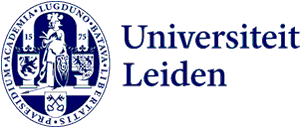
Maarten Jansen compares ancient Mexican writing systems as Distinguished Emeritus Professor in Bonn
Maarten Jansen, professor emeritus at the Faculty of Archaeology, was appointed as Distinguished Emeritus Professor for two years at the University of Bonn. In this position, Jansen, a world-renowned specialist on ancient Mexican pictorial manuscripts, will further expand upon the long-standing collaboration with Bonn. ‘We will work on a systematic comparison of the Aztec and Mixtec pictographic books with Maya hieroglyphic texts.’

Transdisciplinary research
Jansen’s appointment is part of a larger plan of the University of Bonn to attract distinguished emeritus professors in a variety of disciplines. ‘The main aim is to reinforce transdisciplinary research, as well as teaching. I will be embedded at the Institute for Anthropology of the Americas.’ Jansen will share his work in Bonn with his wife Aurora Pérez, herself a specialist on Mixtec language and culture.
The appointment follows in the wake of a long-standing collaboration with the University of Bonn. ‘For years I have been working with Bonn-based professor Nikolai Grube, who is famous for deciphering Maya hieroglyphs.’ There has been a lively exchange between Leiden and Bonn, but this has never reached a systematic level. ‘In the next two years it seems to be a good idea to attempt a systematic comparison of Maya, Mixtec, and Aztec writing. The Maya used phonetic hieroglyphs, which means you cannot understand them without knowing the language. Aztec and Mixtec manuscripts, on the other hand, are pictographic, in which language plays a role, but meaning is mostly coded directly in images.’ In the past decades, the field has specialised to a level that one cannot be a specialist in both systems. This is why collaboration is so important.

Tens of thousands of books
Even though texts in these writing systems are divided by time and place, there are thematic similarities. ‘The most striking overlap is information on history and religion. Both corpora cover wars, rituals, royal marriages. These are examples of Mesoamerican historiography, which probably has been far more widespread.’ In the colonial period most of the manuscripts were lost due to intentional destruction by the European conquerors. ‘Each village or city must have had at least a couple of these documents, totaling up to tens of thousands of books.’ Only a minimal amount have survived.

World view
Once the diverse precolonial texts are better understood, a shared Mesoamerican world view may be reconstructed. ‘This gives us an indigenous perspective . The Spanish invaders saw the indigenous world view as “work of the devil” and burned the manuscripts.’ With this aim, early colonial Spanish chroniclers also reported about rituals and calendars. ‘We are so happy to read these chronicles, that we tend to blink out the fact these were works of propaganda to justify and strengthen the colonial expansion . The same counts for the letters of the Spanish conquistador Cortés, who toppled the Aztec realm.’
This has had a direct effect on the popular view on the Aztecs. ‘The Spanish have created the general image that the Aztecs were religious fanatics, who cut people’s hearts out in enormous quantities to feed their bloodthirsty gods. But when you actually zoom in, you notice that most of these stories are hearsay and not well controllable by other means. In 1521, the year of the conquest of the Aztecs, Cortés claims that human sacrifices and cannibalism were frequent and widespread practices, until he took over and ended this horrible custom.’ Thus, the later Spanish chroniclers did not witness any of this; the gory details stem from their imagination, the amounts given are clearly exaggerated. ‘In the precolonial books, such a focus on sacrificing people for religious reasons is missing…’

Alternatives
Jansen makes clear that he is not claiming that the Aztecs never killed anyone. ‘I just doubt that “sacrifice” is the right terminology. The killings the Spaniards refer to most likely were a form of death penalty, which essentially were no different than in Europe. Cortés’ interpretation of such executions as sacrifice to the devil served to justify his colonial invasion.’ Jansen points at the contemporary reality in Europe. ‘Europe was the scene of intense witch hunting at the time. Persecution of indigenous religions in the Americas was part of the same project, sometimes even undertaken by the same persons.’
Nowadays, people active in indigenous rituals may still be accused of witch craft. ‘Last summer, an indigenous specialist in herbal medicine was burned alive in Guatemala. My hope is that a better intercultural understanding can overcome these horrible remains of the colonial past. Our minds are still very much under the influence of the 16th century missionaries and conquistadors. It is time to explore alternatives.’
